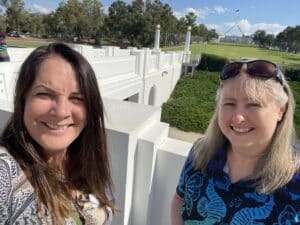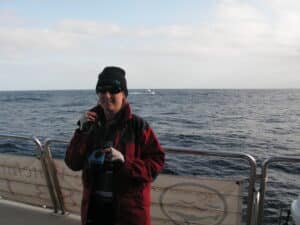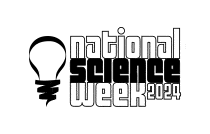One of the most important global meetings on wildlife trade has just wrapped up in Uzbekistan. It’s capital city Samarkand was where governments convened for the 20th Conference of the Parties (CoP20) to the Convention on International Trade in Endangered Species of Wild Fauna and Flora (CITES) to decide how international trade should be managed for some of the world’s most threatened...
National Science Week
This week is National Science Week! (10–18 August)
From 10–18 August, we’ll be celebrating National Science Week. The theme for 2024 is ‘Species Survival: More than just sustainability’. This theme seeks to underline the significance of science and innovation to ensure the survival of different species in an ever-changing world.
At Humane Society International Australia, the survival of species is at the heart of our work.
This week we have highlighted four staff members who protect threatened species and marine wildlife by advocating for stronger environmental laws, educating policymakers and the public, and supporting conservation on private land.
Read on to learn how their science degrees and career decisions led each of them to HSI Australia.
They also share some encouraging advice for anyone looking to pursue a career in science.

HSI Staff from left to right: Lawrence Chlebeck: Marine biologist and Campaigner, Nicola Beynon: Head of Campaigns, Evan Quartermain: Head of Programs and Dr Megan Kessler: Nature Campaigner
1.What is your educational background?
Lawrence: I have a BA in Marine Science – Biology from the University of San Diego, and a MSc in Tropical Marine Ecology from James Cook University.
Nicola: I followed up a natural science undergraduate degree from Oxford University with a Master of Science in Conservation from University College London.
Evan: Biology was my favourite subject in high school and led to a Bachelor of Applied Science majoring in Ecology from the Queensland University of Technology. Wildlife behaviour, population genetics and ecosystem restoration were my favourite subjects.
Megan: I have a Bachelor of Science majoring in natural resource management, a Master of Marine Science majoring in fisheries management, and a PhD on tourism impacts on humpback whales off Sydney and in the Kingdom of Tonga.
2.How did your career pathway lead you to work for HSI?
Lawrence (Marine biologist and Campaigner): I worked in academia for a time, but always had a keen interest in politics and policy making. Working in a University environment I would see incredible work being done by my professors and colleagues in fisheries, climate, threatened species and marine management. But at the same time, I couldn’t see how all this great work was being used to help our threatened oceans and environment.
For years I bounced around different science jobs, hoping for an opportunity to do something meaningful for the oceans and marine wildlife and by fortunate happenstance I found the chance to work with HSI. It has since been the most rewarding job I’ve ever had, working with the most incredible team.

Lawrence tagging a black-footed albatross in the French Frigate Shoals
Nicola (Head of Campaigns): I left university determined to use my career to make a positive difference for the animals we share the world with. I soon found myself in Australia where I volunteered on projects planting trees for regent honeyeaters in the Capertee Valley NSW, pulling out lantana in the Wet Tropics, and painting protests banners for The Wilderness Society who then took me on as their Sydney Office Manager. Then in May 1998 I was thrilled and honoured to be offered the job of Biodiversity Campaigner with HSI Australia.
Evan (Head of Programs): The more I learned at university the more my eyes were opened to the many environmental injustices in Australia and around the world. When I saw the Wildlife Land Trust coordinator job at HSI advertised after my final exams there was no way I was going to pass it up. I feel extremely lucky to have landed my first professional role here and to be representing HSI Australia as Head of Programs nearly 15 years later.
Megan (Nature Campaigner): A key driver for me has always been to ensure the better use of science in decision making. I’ve tried to achieve that through my research and in policy and campaigning work, and as the Scientific Director at Environmental Defenders Office, where I helped community members and organisations access the best possible scientific advice when they were trying to defend the environment through law. That led me to my role at HSI Australia which is about trying to make environment laws better incorporate scientific knowledge so better decisions can be made in the first place.
3.How does your work at HSI contribute to Species Survival?
Lawrence: I work to educate politicians and the public on marine wildlife conservation matters from fisheries and marine protected areas to plastics and shark culling programs. Through meetings with politicians, appearances in media and a lot of behind-the-scenes communication, my job is to shed a light on issues that desperately need our attention. We’ve nominated a significant number of sharks and rays for listing under national environment laws, and work to reduce their catch in fisheries and shark meshing programs. We can stop killing threatened marine wildlife – it’s about convincing decision-makers to have the will to do so.
Nicola: HSI is the organisation behind many of the scientific nominations to protect threatened species on Australia’s environment laws, and I have been proud to be involved in many of the nominations. Of course, listing a species as threatened is just the start of the hard work. We campaign hard to make sure the protection is meaningful and enforced for each species. It’s an uphill battle.
Evan: So much of the work HSI does contributes to species survival, but I’m particularly proud of our nominations program that has initiated nearly 50 per cent of the Threatened Ecological Community listings under national environment law. I’ve been working with our Wildlife Land Trust program from its start of 35 member sanctuaries around Australia to the current 929 too. The collective difference those dedicated people make is enormous and it’s a privilege to support them!
Megan: We have more than 2,000 species and ecological communities listed as nationally threatened in Australia. Our environmental laws determine how and to what extent developments and other activities will be permitted to impact on threatened species as well as time and effort we put into supporting threatened species recovery. By working for stronger nature laws, I’m trying to improve the survival chances for all our threatened species.
 Nicola and Megan at Parliament House, Canberra
Nicola and Megan at Parliament House, Canberra
4.What has been the highlight of your time at HSI so far?
Lawrence: The highlight of my time at HSI has been representing our organisation at international threatened species conferences such as CITES – the Convention on the International Trade in Endangered Species. In 2022, a group of organisations, including HSI, achieved an amazing outcome when the most-fished family of sharks—the requiems—were all listed under CITES appendices, meaning shark-finning would be regulated for the very first time.
Another incredible moment was our victory in court against the lethal culling of sharks in the Great Barrier Reef Marine Park in 2019. We argued that culling sharks on the Reef was in direct violation of the values upon which the Great Barrier Reef Marine Park was founded. The court agreed with us, and now sharks are no longer lethally culled in the Great Barrier Reef.
Nicola: HSI’s court cases often bring about the biggest wins. Highlights of working at HSI have been winning a case against the Japanese whalers in Antarctica and stopping the deliberate shooting of sharks in the Great Barrier Reef.
Evan: The variety of work I’ve been able to do at HSI is another thing that makes a career in science so appealing. Other than some of the bigger threatened habitat listings and spectacular sanctuaries brought into the Wildlife Land Trust, I’ve been able to reunite an earthquake survivor with their lost cat in Türkiye, release a rescued snake into a Balinese forest temple sanctuary and a koala that we had rescued from burned forests on Kangaroo Island back into the wild after treatment, and meet wombats and kangaroos that were only given a second chance at life through support HSI was able to provide thanks to the generosity and trust of our donors.
 Following the earthquake in Türkiye in 2023, Evan deployed as part of an HSI global rescue team
Following the earthquake in Türkiye in 2023, Evan deployed as part of an HSI global rescue team
Megan: This week, HSI Australia’s seabird expert is an official Observer at the Agreement on the Conservation of Albatross and Petrels (ACAP). He is discussing our paper recommending that Parties to ACAP develop best practice advice on how to ensure the development of offshore windfarms in the southern hemisphere has a minimal impact on albatross. HSI Australia has been working to protect albatross from existing threats, such as long-line, fishing for many years. But albatross are still at risk so it’s important that we engage on any new potential risks to the species, such as collisions with offshore windfarms. I’m proud that we are being proactive and working with industry and government to ensure that that the best available science is built into planning for this emerging industry.
5.What advice would you give young people looking to pursue a career in science?
Lawrence: Get involved! Whether it’s volunteering for a conservation organisation, or even a scientist in your area, any bit of experience will help you down the road. And stay in the know! Search for the newest findings or latest studies on your favourite science topics, tell your family about it, and if it has relevance to your community, you can even tell your local politicians.
Nicola: I love where my science degrees have taken me. The knowledge and skills I learnt at university are still helping me today to make a difference for animals.
Evan: Don’t feel limited with the careers you can pursue. A science degree teaches you how to think analytically and that opens so many doors. Seek out and take a chance on jobs that speak to your values because working for a cause you believe in can be incredibly rewarding.
Megan: Science can take you anywhere – whether you want to do field work, lab work or office work where you support the better application of science in people’s day to day lives. Don’t limit your dreams and, I say this particularly to young women interested in science, don’t let other people limit them for you.

Megan conducting research for her PhD on a commercial whale watching boat off Sydney



